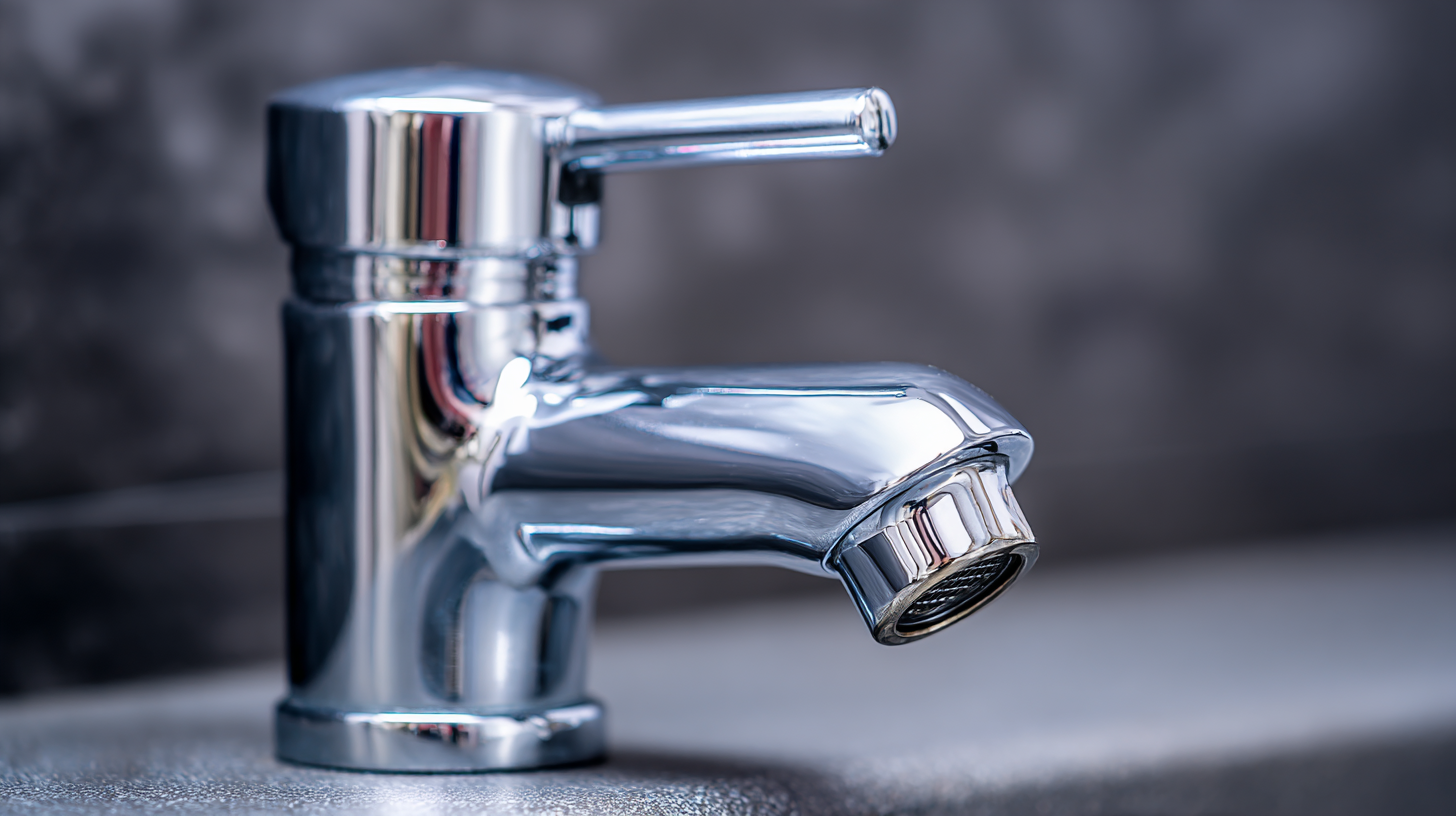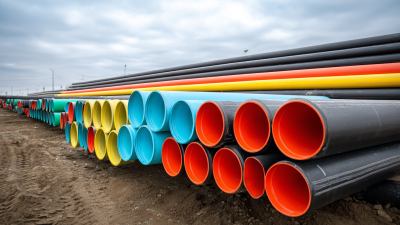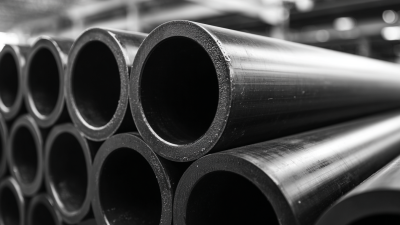-
Products and Systems
Products and Systems
Vinidex manufacturers and supplies a broad range of products & systems to suit a range of applications.
-
Solutions
Solutions
Vinidex’s products and systems are versatile and can be used in a variety of markets and applications.
- Resources
-
Top 5 Essential Tips for Choosing the Best PE Fitting for Your Plumbing Needs
In the world of plumbing, selecting the right materials can make or break the integrity of a system. Particularly, when it comes to PE fittings, the options available are vast and choosing the right one can be daunting. As industry expert John Smith, a seasoned plumbing engineer with over 20 years of experience, emphasizes, "The right PE fitting is crucial for ensuring a leak-proof and durable plumbing solution."

Whether you are a DIY enthusiast or a professional plumber, understanding the essential qualities of PE fittings is imperative. These components are not just functional but play a significant role in the overall durability and efficiency of plumbing installations. From understanding the varying types and specifications to recognizing the importance of quality and compliance with industry standards, making an informed choice is vital.
In this article, we present the top five essential tips that will guide you in selecting the best PE fittings suited to your plumbing needs. By combining expert insights and practical advice, we aim to equip you with the knowledge necessary to make informed decisions that enhance the reliability and longevity of your plumbing systems.
Understanding Different Types of PE Fittings Available in the Market
When selecting the right PE fittings for your plumbing needs, it's essential to understand the various types available on the market. Polyethylene (PE) fittings come in several forms, each designed for specific applications and compatibility with different piping systems. The most common types include butt fusion fittings, electrofusion fittings, and mechanical fittings. Butt fusion fittings create a strong bond through heating and joining the pipe ends, making them ideal for high-pressure systems.
Electrofusion fittings, on the other hand, utilize electric current to melt the fitting and pipe surface for a secure connection. They are particularly advantageous in complex installations where precise jointing is required. Mechanical fittings provide flexibility and ease of installation, fitting over the pipe ends and using bolts or compression seals to create a tight connection. Understanding these options will not only help you choose the right fitting but also ensure the reliability and longevity of your plumbing system.
Top 5 Essential Tips for Choosing the Best PE Fitting for Your Plumbing Needs
Identifying Your Specific Plumbing Requirements for PE Fittings
When choosing the best polyethylene (PE) fittings for your plumbing needs, it's crucial to first identify your specific plumbing requirements. Understanding the unique demands of your project not only ensures efficient installation but also enhances the longevity and reliability of your plumbing system. Recently, discussions surrounding IPC Code changes have highlighted the importance of compliance, specifically in the context of natural gas pipeline systems, which are often installed in Location Classes 3 and 4. Adhering to such standards can greatly influence the selection of fittings that will meet safety and performance guidelines.
In addition, specific characteristics such as pressure ratings, temperature tolerance, and chemical compatibility of PE fittings must align with your intended application. A report from the American Society of Civil Engineers indicates that selecting the right type of fitting can reduce material failure rates by up to 30%, emphasizing the significance of informed decision-making. With these considerations in mind, plumbing professionals should thoroughly assess existing plumbing configurations, environmental factors, and compliance requirements to ensure that their choice not only meets immediate needs but also aligns with future regulatory standards.
Top 5 Essential Tips for Choosing the Best PE Fitting for Your Plumbing Needs
| Tip No. | Tip Description | Consideration Factors | Application Suitability |
|---|---|---|---|
| 1 | Assess Your Pipe Size | Diameter, Pressure Rating | Mainlines, Branch Lines |
| 2 | Consider the Fluid Type | Chemical Compatibility | Potable Water, Wastewater |
| 3 | Evaluate Environmental Conditions | Temperature, UV Exposure | Outdoor Installations |
| 4 | Check for Standards Compliance | ANSI, ASTM, ISO Standards | Industrial, Residential |
| 5 | Seek Professional Advice | Consult with Plumbers/Engineers | Complex Installations |
Key Factors to Consider When Selecting PE Fittings for Durability
When selecting PE fittings for your plumbing needs, durability stands out as a critical factor. First, consider the material composition of the fittings. High-density polyethylene (HDPE) is known for its strength and resistance to environmental stress, making it an excellent choice for various applications. Always check for certifications and standards that the fittings meet, as these can indicate their resilience against potential damage from chemicals or extreme temperatures.
Next, examine the fitting design and connection types. Features such as fusion welding or mechanical joining can enhance the longevity of the fittings. Properly designed joints and seals are essential for preventing leaks and ensuring a secure fit under pressure. Additionally, consider the intended application and environmental conditions when choosing fittings—some may be more suitable for underground installations while others excel in above-ground settings. By prioritizing these factors, you can enhance the overall performance and lifespan of your plumbing system.
Evaluating Compatibility of PE Fittings with Existing Plumbing Systems
 When selecting polyethylene (PE) fittings for your plumbing system,
evaluating their compatibility with existing plumbing components is crucial. Different materials, such as
copper, PVC,
or galvanized steel, come with specific requirements
regarding fittings. Understanding the physical and chemical properties of these materials helps ensure a
secure and leak-free connection. For instance, when connecting PE fittings with metal pipes,
it's important to use proper transition fittings to manage differences in thermal expansion and contraction,
thereby preventing premature failures.
When selecting polyethylene (PE) fittings for your plumbing system,
evaluating their compatibility with existing plumbing components is crucial. Different materials, such as
copper, PVC,
or galvanized steel, come with specific requirements
regarding fittings. Understanding the physical and chemical properties of these materials helps ensure a
secure and leak-free connection. For instance, when connecting PE fittings with metal pipes,
it's important to use proper transition fittings to manage differences in thermal expansion and contraction,
thereby preventing premature failures.
Furthermore, the pressure rating of PE fittings must correspond with the existing plumbing system. If the current piping operates under high pressure, ensure that the chosen PE fittings can withstand this pressure without risk of rupture. Additionally, consider the diameter of the existing pipes; mismatches can lead to poor flow rates and increased stress on the connections. By thoroughly assessing these compatibility factors, you can select PE fittings that not only enhance your plumbing's efficiency but also extend its lifespan.
Cost-Effectiveness and Value Evaluation of PE Fittings Options
When evaluating the cost-effectiveness and value of PE fittings for your plumbing needs, several factors come into play. First and foremost, consider the longevity and durability of the material. High-quality polyethylene fittings are designed to withstand a range of environmental conditions, ultimately reducing the frequency of replacements and associated costs. This makes investing in premium options a more economical choice in the long run, even if the initial purchase price is higher.

Additionally, it is crucial to assess the compatibility of PE fittings with your existing plumbing system. Choosing fittings that align well with your current infrastructure can prevent costly leaks and repairs down the line. Compare the prices of various brands, but also weigh their performance reviews and warranties. Sometimes, a lower-priced fitting may actually end up costing more due to poor performance. Thus, a thorough evaluation of both cost and value is essential for ensuring that you make a wise investment in your plumbing system.
Related Posts
-

Understanding the Essential Role of PE Pipe Fittings in Modern Plumbing Systems
-

Understanding the Benefits and Applications of HDPE Plastic Pipe in Modern Infrastructure
-

Understanding the Advantages of High Density Polyethylene Pipe in Modern Infrastructure Solutions
-
Exploring the Benefits of HDPE Pipe: Why Its Durability and Chemical Resistance Make It an Industry Standard
-

Exploring the Versatility of Black Plastic Pipe in Modern Infrastructure Solutions
-

The Ultimate Guide to PVC Pipes and Fittings: Exploring Benefits, Standards, and Market Trends

